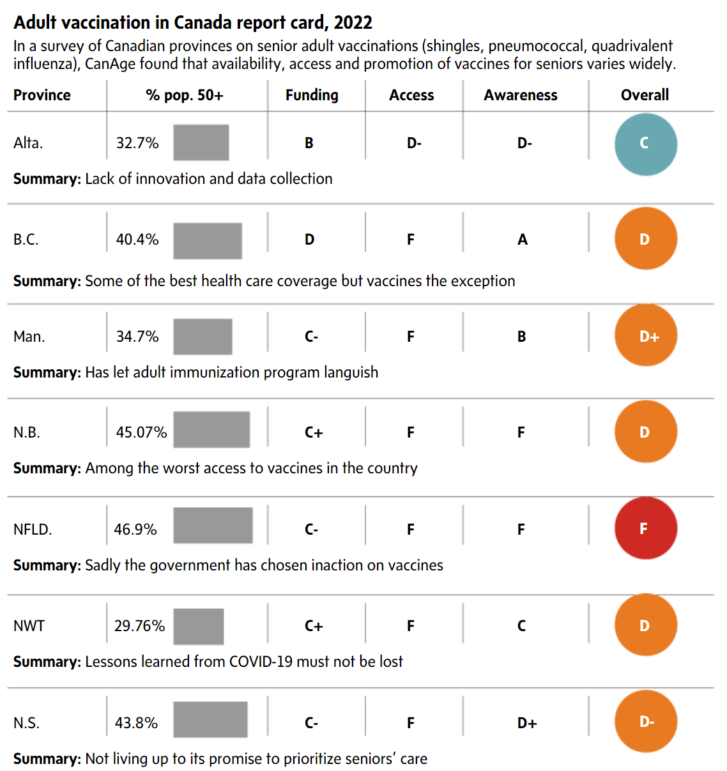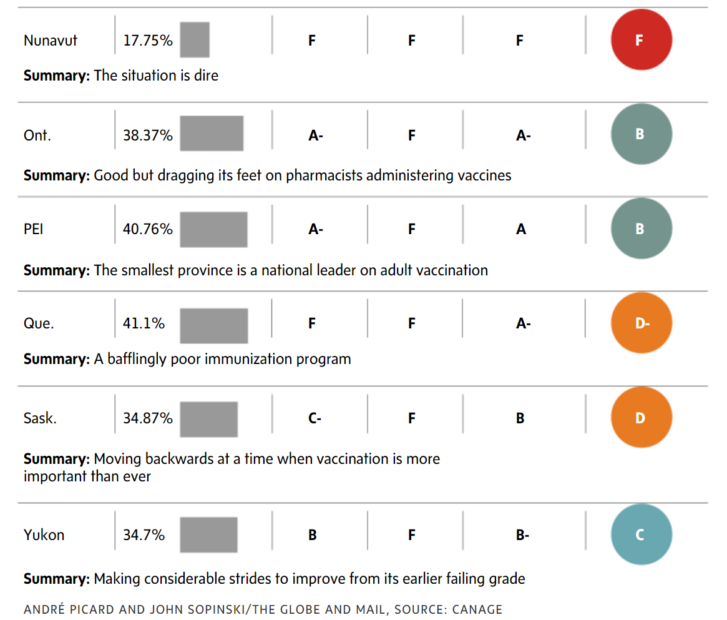Arguably, never in history have people been more acutely aware of vaccination, from its power to its limitations.
But the singular focus on COVID-19 has, paradoxically, led us to neglect other vaccines that are crucial to our health.
About one in four children and one in seven adults have missed routine vaccinations during the pandemic, according to polling by 19 to Zero, a non-profit coalition that promotes vaccination. (Note, too, that those numbers are likely underestimates because a significant minority of people have no idea what vaccines they should receive or have received.)
At the same time, the massive medical, political and economic effort that has gone into the rollout of COVID-19 vaccines has reminded us how much better we could be in promoting, delivering and monitoring routine shots.
Currently, about 89 per cent of eligible Canadians have received at least one dose of a COVID-19 vaccine, and 83 per cent have received two or more doses. Those are remarkable numbers and a reminder that, no matter how loud or self-righteous they are, the unvaccinated remains a small minority.
The vast majority of parents are also diligent about protecting their children from childhood illnesses by getting them vaccinated.
Kids get a lot of vaccines, and that’s a good thing. A century ago, about one in five children died of infectious diseases before their fifth birthday.
Today, those deaths are virtually unheard of. Children should not die, period. We shouldn’t lose sight of that fact when ridiculous arguments are put forward claiming vaccination is unnecessary because “not many children have died of COVID.”
In recent years, we’ve done a good job of combining vaccines so that children get fewer needles, and of expanding coverage so they are protected against more illnesses.
Most babies now receive a 5-in-1 (or 6-in-1) vaccine that protects against diphtheria, tetanus, pertussis, polio and Hib disease (as well as hepatitis B.)
They also receive the MMR (or MMRV) vaccine that protects against measles, mumps, rubella (and varicella, or chickenpox). Rotavirus, pneumococcal and meningococcal C vaccines are also routine. Many of these vaccines require two to four doses. Multiple shots, as is the case with the COVID vaccine, is not unusual.
Coverage rates vary by vaccine and by region of the country, but range from 75 per cent to 90 per cent, at least prepandemic.
Vaccines aren’t just for babies either.
Adolescents are routinely immunized against human papillomavirus (HPV – an infection that can cause cervical cancer), hepatitis B and meningococcal C.
Adults, mostly older ones, can also benefit from a shingles vaccine, and protection from different types of pneumonia. And, of course, all age groups can get the influenza vaccine, including a version specially formulated for seniors.
But vaccination rates for adults are abysmal compared to those for children, a reality underscored in a report issued Monday by the advocacy group CanAge.


Unlike childhood vaccines, which are routinely encouraged by physicians and available free of charge, elders have to make a considerable effort to get vaccinated and pay out of pocket for many shots. The shingles vaccine, for example, is covered publicly in three jurisdictions (Ontario, PEI and Yukon) but costs about $300 elsewhere.
The question is, what will happen going forward? Will all the attention focused on vaccination make Canadians more vigilant about getting their shots? Or will the raft of misinformation and fear-mongering increase vaccine hesitancy?
COVID reminded us that the key to good vaccine coverage is accessibility. Record-keeping is important, too.
During the pandemic, we opened vaccine clinics all over the place, and we promoted them heavily.
We created vaccine registries – although, frustratingly, not a single national database. Some provinces still use paper-based records, in the form of yellow vaccine booklets, and that’s a tragedy. There are good alternatives, such as the CANImmunize app, but these need to be formalized.
We made better use of pharmacists during COVID-19 (although the question of which vaccines pharmacists can administer in which provinces is an incomprehensible mishmash).
We finally started taking needle pain and the fear of needles (trypanophobia) seriously thanks to online initiatives such as #ItDoesntHaveToHurt, a social-media campaign to reduce vaccine pain and fear in kids that has gone viral.
But school-based immunization, which is the mainstay of adolescent vaccine delivery, collapsed during the pandemic. Similarly, most parents get their kids vaccinated by pediatricians or family physicians, and many of those offices were closed during the pandemic.
Catch-up programs are going to be important, especially for young children. The last thing we need during a pandemic is outbreaks of measles, mumps or chickenpox.
Ultimately, it doesn’t matter who administers shots, or where they do it. It’s getting vaccines into arms that matters – and, today and in the future, it matters for a lot more than just COVID-19.
Article From: Globe and Mail
Author: ANDRÉ PICARD

